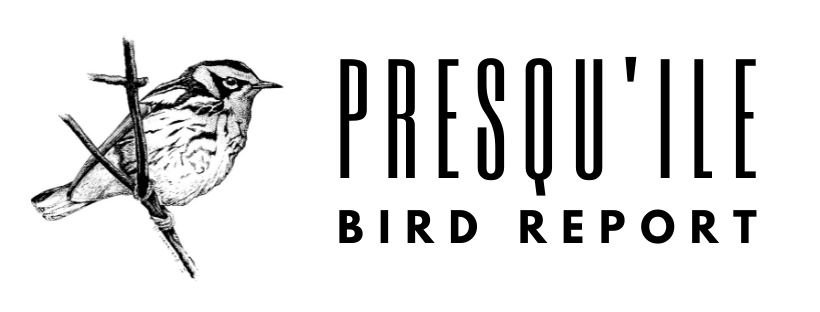Presqu’ile Bird Report for 24 – 30 Jan 2020
HIGHLIGHTS:
WINTER WREN,
COMMON GRACKLE
It was a painfully slow week with almost no coverage and a general dearth of birds. Sorry.
Waterfowl drift in and out of Presqu’ile bay with the ice so numbers vary but usually there are between a few dozen to a few hundred each of REDHEAD and GREATER SCAUP and on 24 Jan, two CANVASBACK mixed in. LONG-TAILED DUCK and COMMON GOLDENEYE are fairly numerous and a few BUFFLEHEAD and WHITE-WINGED SCOTER are around, usually toward the outer bay.
WILD TURKEYS are seen more often now that there is some snow cover. Raptors were limited to an immature SHARP-SHINNED HAWK on 29 Jan, and immature COOPER’S HAWK on 27 Jan and a few BALD EAGLES around the Bay. GREAT HORNED OWLS used to be a regular breeding species in Presqu’ile but largely disappeared from this region in the early 2000’s, possibly due to the arrival of West Nile virus. A pair nested in the Park for the first time last year and this week a pair was heard calling on 24 Jan, perhaps heralding a return of this species as a regular breeding species. Since they will be initiating nests anytime now, please don’t bother or approach them if you see or hear them. It may not be a coincidence that there have been no sightings of BARRED OWL in two months, a species that is normally seen weekly. A few SNOWY OWLS are frequenting Presqu’ile Bay and the islands.
A WINTER WREN was an unexpected find near post 5 of the Jobes Woods Trail on 26 Jan. A SONG SPARROW visited the Birdhouse Nature Store feeders on 27 Jan and a WHITE-THROATED SPARROW paid a visit to a Bayshore Rd feeder on 25 Jan. Finally, a COMMON GRACKLE paid a visit to the Birdhouse Nature Store feeders on 24 Jan.
Directions: Presqu’ile Provincial Park is located on the north shore of Lake Ontario, just south of the town of Brighton. It can be reached from either Hwy. 401, or Cty. Rd. 2 and is well signed. A Park map can be found in the information tabloid available at the Park gate. Presqu’ile’s two offshore islands – Gull and High Bluff – support a large multi-species colonial bird nesting area and access is not permitted during the breeding season (10 March-10 September).

